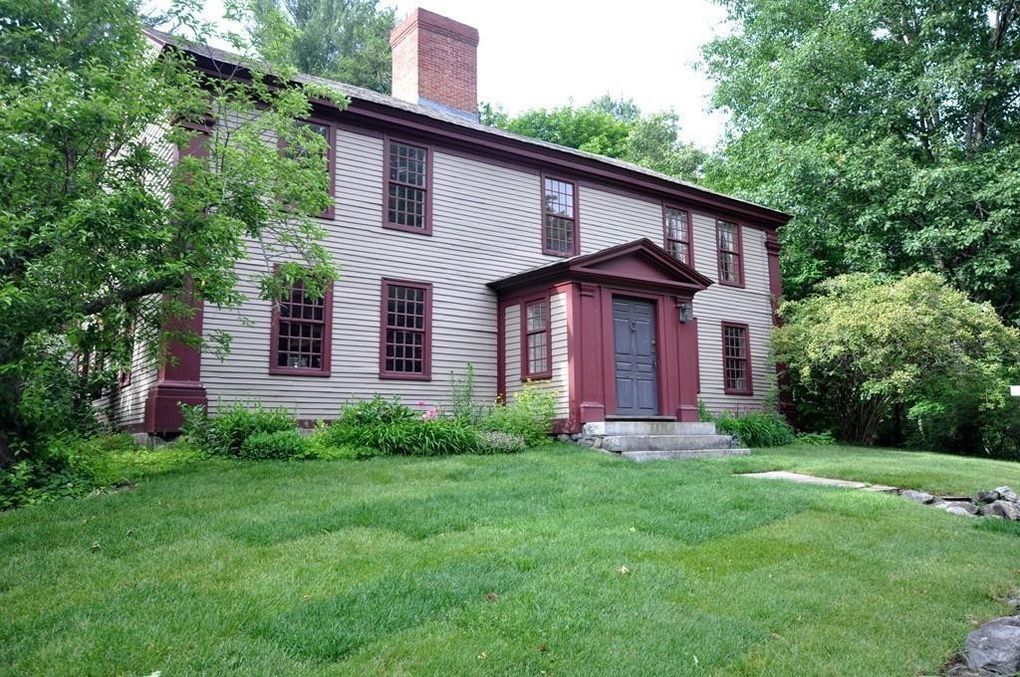Concord Home To American Revolutionary War Hero On The Market
Share News:
 There is just something about a Colonial and Early American era home that makes you want to pull out the David McCullough books and transport yourself back to the incredible point in time where a new nation was born.
There is just something about a Colonial and Early American era home that makes you want to pull out the David McCullough books and transport yourself back to the incredible point in time where a new nation was born.
And we’ve made no secret of our love of a well-preserved home from that era — we’ve written about the Green Hill House in Salem, Virginia; the Philadelphia home of Joseph Hopkinson; the Daniel Bliss Homestead in Rehoboth, Massachusetts; and the Samuel Jones house in Concord, Massachusetts.
This week’s historical shelter was built in 1672, and was home to Joseph Hosmer, who was a lieutenant at the beginning of the American Revolutionary War. In fact, he acted as adjutant in the Battle of Concord, which happened the same day as the Battle of Lexington — April 19, 1775.

The Battle Of Concord, 1775
It was a date that is now pointed to as the beginning of the Revolutionary War.
“I really don’t have time to spare from our household chores to write in this Journal–and yet, I must, to calm my nerves and enable me to think clearly about these perilous times,” wrote Hosmer’s wife, Lucy the night before. “This I must surely do to help my husband, Joseph Hosmer, our four children, and our dear village of Concord. No shots have yet been fired but already we are a wartime community…Last night Joseph and I drove by ox team two wagon loads of ammunition from Acton to hide on Deacon Jonathan Hosmer’s farm there. His twenty-year-old son, Abner, is Joseph’s third cousin and an Acton Minuteman.”
That move, which included four brass cannons smuggled out of Boston, proved to be pivotal.

One of the brass cannons smuggled out of Boston to Concord, and then smuggled out by Hosmer, on display at the Minuteman National Historical Park (Photo courtesy the National Parks Service).
“At about 9:00 A.M. on the morning of April 19th, 1775, approximately 450 men from Concord and the neighboring towns of Acton, Lincoln, Bedford, and Westford congregated on a rising pasture above the North Bridge,” historian Joel Bohy wrote. “Capt. David Brown, one of the captains of Concord’s two minute companies, happened to own the pasture, which had a good view of the bridge. In the town, 700 British grenadiers and light infantry had arrived to look for large quantities of hidden military supplies and arms.”
Some of those minutemen had marched towards Lexington, but turned around as the met the oncoming British unit, eventually gathering in the field by the bridge.

Photo courtesy Wikimedia Commons
“As more colonial reinforcements arrived on the field, Lt. Joseph Hosmer of Concord, acting as adjutant, began to organize the men into line, and the officers met to decide their next move,” Bohy wrote.
“As the group of men gathered in the pasture tried to decide what to do next, smoke began to rise from the town. The British troops had begun to burn what meager martial supplies they had found and the spreading flames had caught the town house on fire,” he continued. “The sight of smoke created a stir among the men waiting above the bridge in the musterfield. Lt. Hosmer barked, ‘Will you let them burn the town down?’”
For those who paid attention in American History class, the answer is known immediately.
“The British then continued into Concord to search for arms, not realizing that the vast majority had already been relocated,” the History Channel explains. “They decided to burn what little they found, and the fire got slightly out of control. Hundreds of militiamen occupying the high ground outside of Concord incorrectly thought the whole town would be torched.”
“The militiamen hustled to Concord’s North Bridge, which was being defended by a contingent of British soldiers,” the article continues. “The British fired first but fell back when the colonists returned the volley. This was the ‘shot heard ‘round the world’ later immortalized by poet Ralph Waldo Emerson.”
The British dallied in Concord, still searching for the cache of arms, for four hours, and by the time they began their 18-mile march back to Boston, nearly 2,000 minutemen had responded to the call to action, and more kept coming, following the redcoats as they marched before taking to the trees, walls, and houses along the route to launch geurilla style attacks.
British reinforcements joined the column in Lexington, but it didn’t stop the attacks, which continued all the way to Boston. The war had begun, and Hosmer apparently made the rank of major at some point.
His home, which is on the National Register of Historic Places, is at 572 Main St. in Concord, and is within walking distance to the Historic Concord Center. It’s a two-and-a-half story timber-frame structure, with a large central chimney and an ell to the east.

It’s unsure exactly what parts of the house were built when — the two halves of the house flanking the central chimney are thought to have been built at the same time, but there is a possibility that the easter half was added at the same time as the eastern ell, which is a separate structure and was added in 1757.

Many historians believe that the oldest portion of the main part of the home was built in 1672, and the eastern ell and possibly the eastern half of the house was added in 1757 by Hosmer himself.

“This home is defined by nine fireplaces, detailed period millwork, period wainscoting, rich wide board floors, beamed ceilings, and raised paneling,” said listing agent Patricia Sinton of Coldwell Banker Residential Brokerage – Concord. “An outstanding feature of the property is the detached two-story VINTAGE BARN that has a two car garage, spacious workshop and ample loft storage, and the barn offers a possible conversion to guest quarters or home office.”


Sinton said the home has been updated with modern amenities, but we noticed that there is still some opportunity for a real history buff to take a crack at marrying the historical with the 2019 sensibilities, especially in the kitchen.

